VRDS-25 from TEAC
Related
articles: T1 VRDS
transport, Denon DCD2560
with same dac AD1862
Feb 2008
Teac has a hell of a reputation, I don't know why exactly. Nothing
special sets them apart but maybe they are a little bit better in
marketing than their peers. For example Philips invented so many
wonderful all the goodies, all best chips,
mechanisms, etc and they don't have even 10 % of TEAC reputation.
Maybe it is the VRDS thing - every hifi rag devoted countless pages
explaining the principle of very rigid disc clamping system - how the
pressure clamping disc "prevents the CD from vibrations" but in other
players nothing prevents the vibrations and yet they still manage to
play well. So to me it seems like TEAC created an antidote to a
non existent poison, and then they sold the whole concept as their key
differenciator and they had to invent the poison. Clever people.
Anyway, they took the stock, middle of the range SONY mechanism KSS151A
(like in Sony CDP227ESD player)
and added a large puck on top of it. Is it good or bad - I dunno, but
it looks positively hitech.
To be able to sell the story even better - in this VRDS 25 player (they
named the player after the mechanism name - see how important the
plastic puck is to their marketing? Sortof like calling a car
Turbo.) they made the face plate of 10 mm solid aluminium and
everything
is oh-so-heavy.
To my big surprise - the main PCB is REALLY a very nice one. Almost
like in Copland. Premium parts, audio grade electrolytes, very very
neat auto-CAD of PCB layout, fully differential balanced topology and
OH MY GOD - the AD1862 super
duper chip. What a rare DAC. A white raven. To be found only in world's
best players, like for example in the best denon - the 2560.
This DAC has current output (the better, more kosher type) and it can
be lampized with R conversion. I used 570 Ohms which I had on hand.
I quickly cut the leg 11 of the chip from the PCB track (I mean I cut
the track leading from leg 11 to next parts - 4 opamps in a row per
phase.)
I wired the now freely floating leg 11 to lampizator leg 7 and then
from leg 7 to leg 9 - a resistor of 570 Ohms.
Surprisingly this player has balanced outputs.
Lampization is possible as SE ( RCA) and balanced XLR at
the same time.
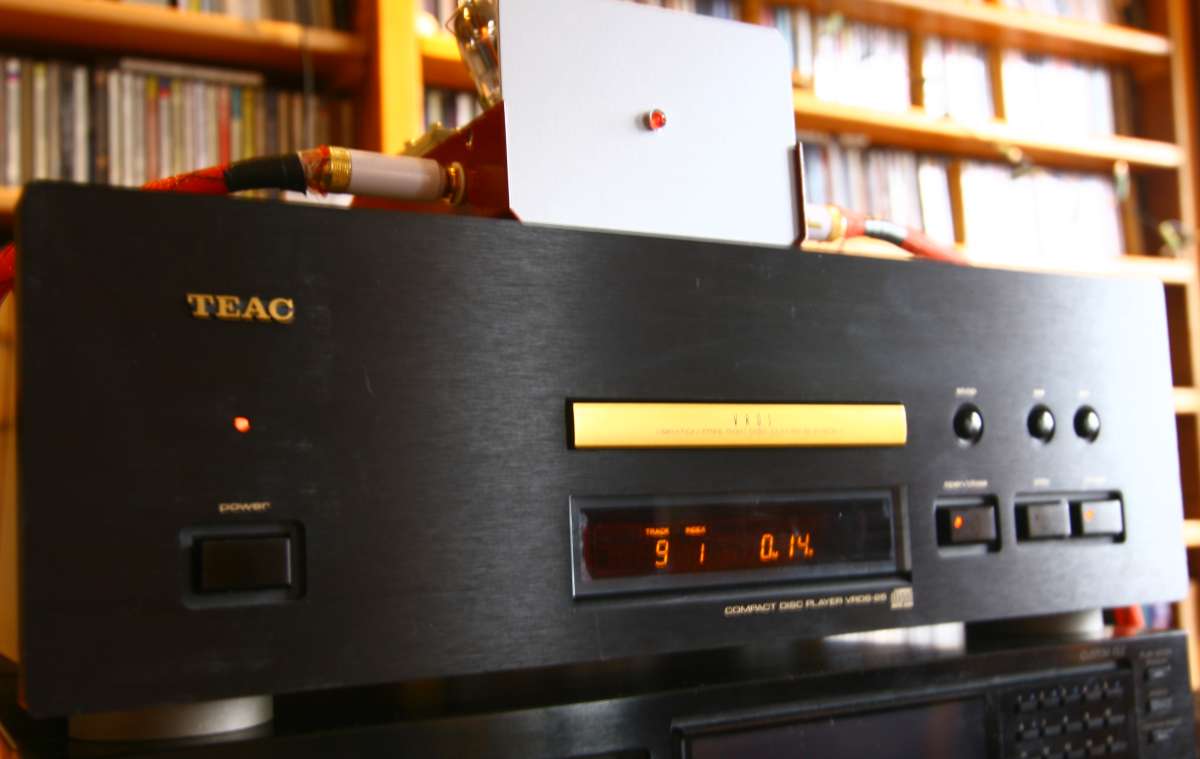
I quite like plain and simple face plates like this one. The only minor
reservation in this player rating is it's very slow drawer.
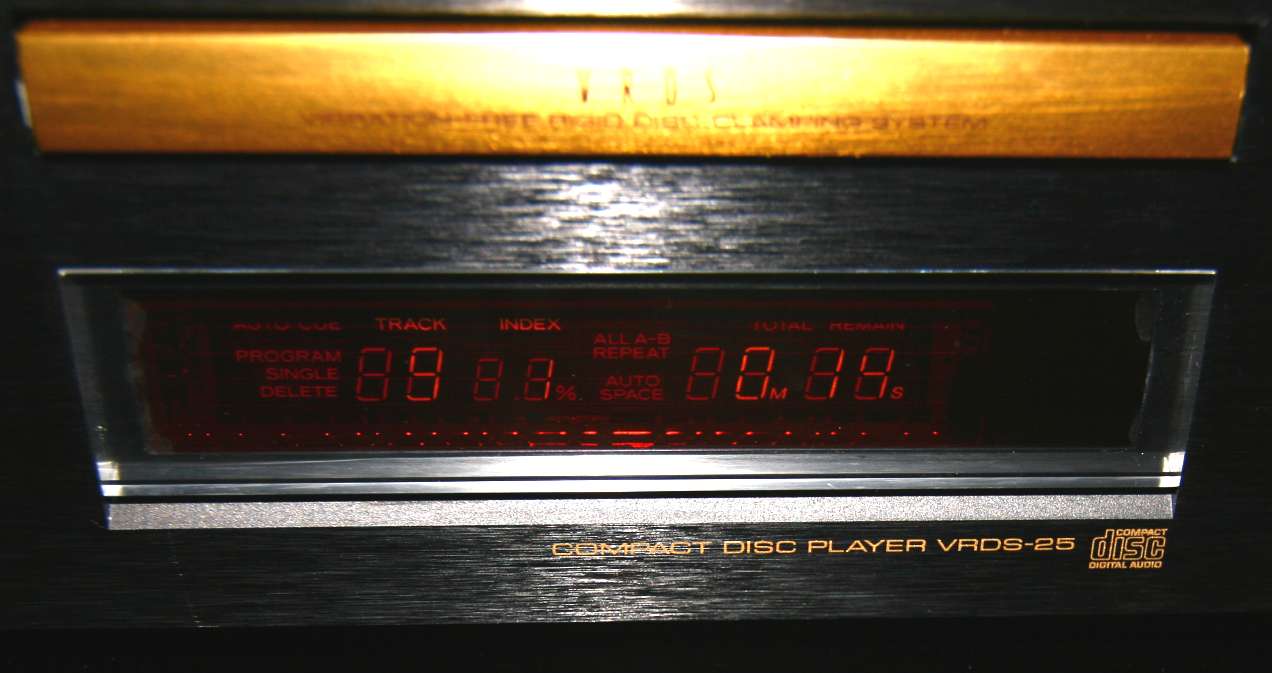
Golden drawer in black player. Hmmmm.....
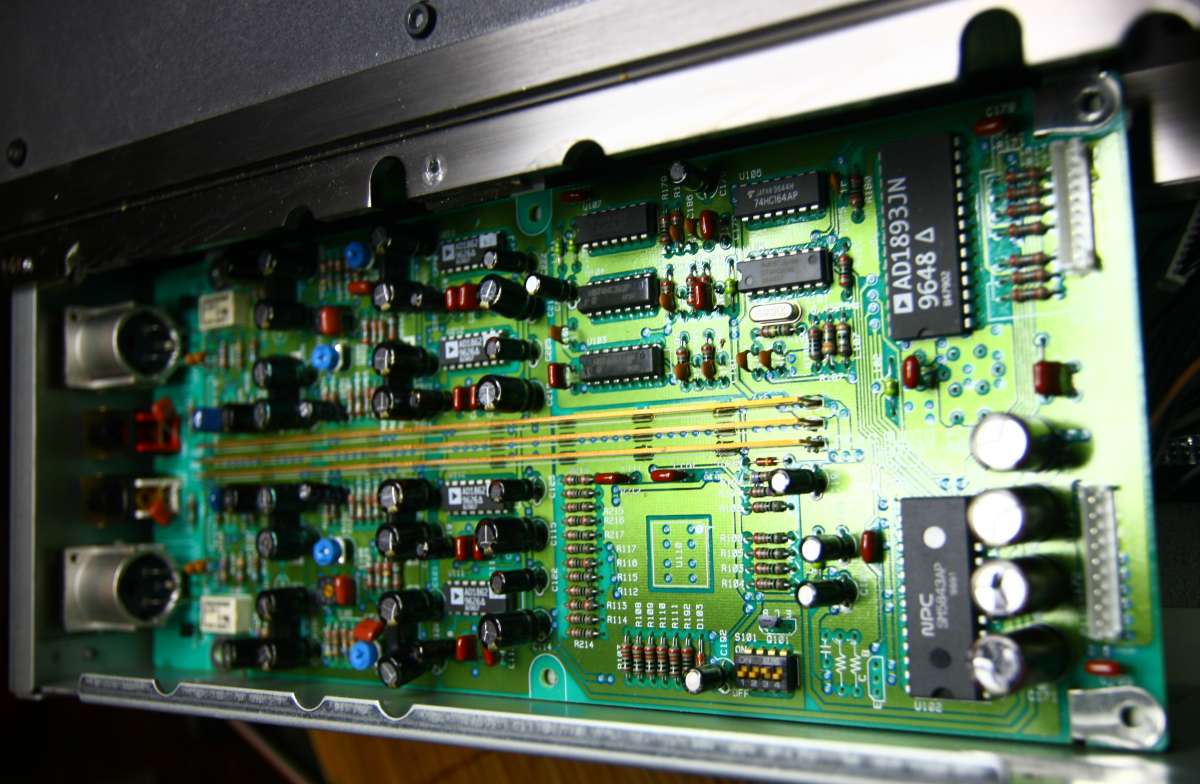
Great PCB - neat, simple, beautiful - everything is first class. Hats
off.
ASD-Audiotuning company from Germany offers upgrade replacement chips
for these two suckers on the picture's right - the demodulator and the
upsampler- NPC and the AD1893. The better parts from Mr. Andreas (we
paid some 100 Euro plus) are 24/192 compatible and the DAC is a
20 bit one. The clock is not typical - 18 ,xx meg. The upgrade allows
to squeeze the max from the 1862 DAC. It took me 10 minutes do de
solder and solder the upgrade.
I suspect that 1862 is the same as Burr Brown 1702. Something is
telling me ....
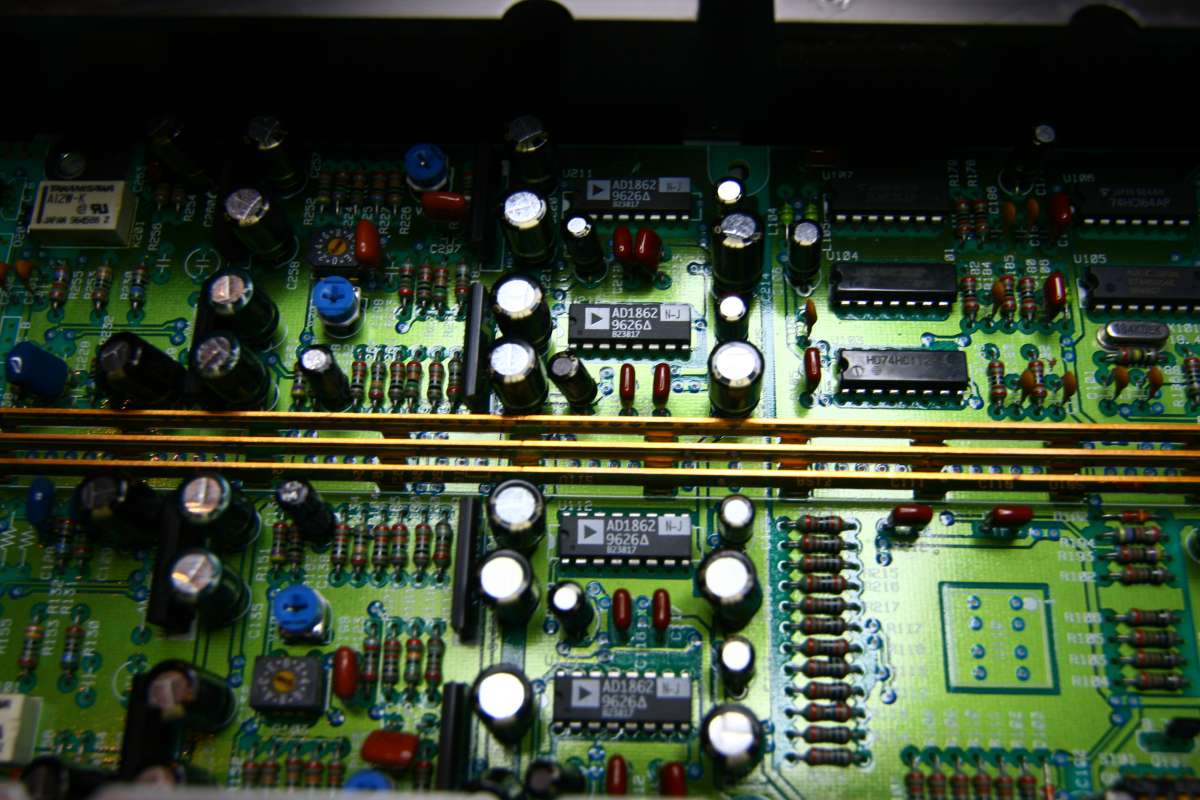
Enter Analog
Devices AD1862 N-J DAC chip
Four DAC chips in
a row. Mmmmmmm. Nice. One per channel per phase. They
go like this from bottom of the photo : L-, L+, R+, L-. I took
the signal from the inner pair.
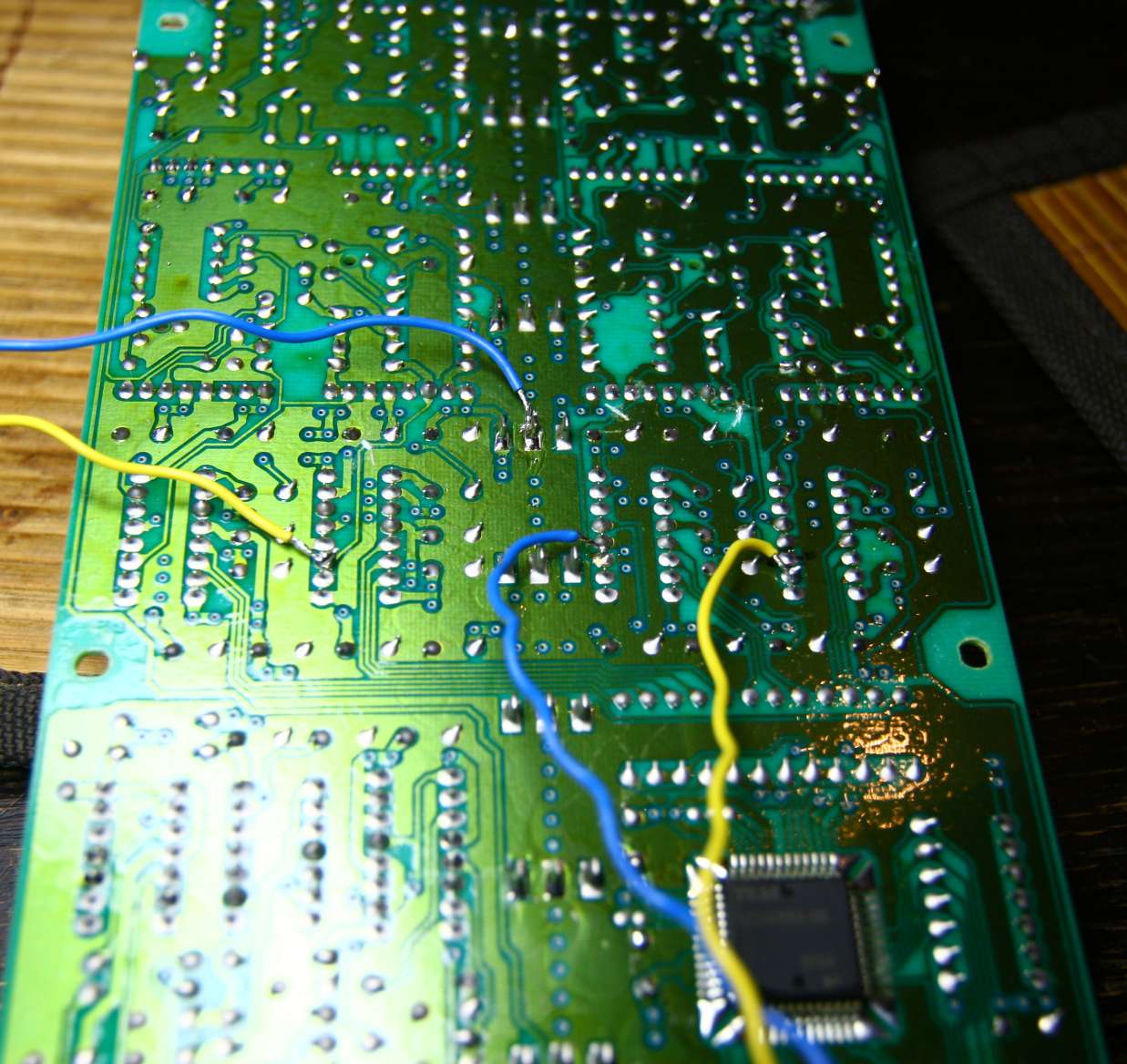
Please ignore the most right yellow wire - my mistake (left channel
phase neg). Top-most blue wire is the earth.
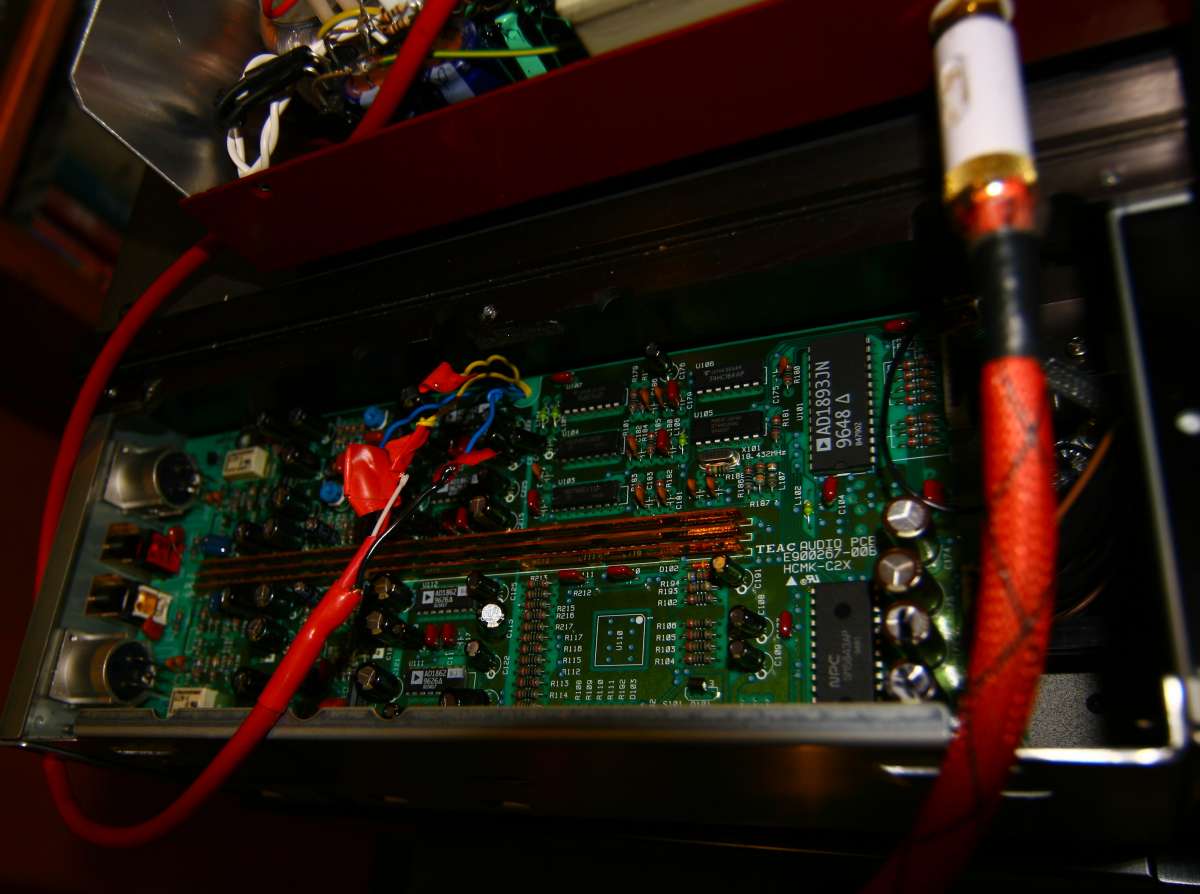
Test hookup of the lampizator. (traces are cut underneath the board to
free float the leg 11 of each DAC, so it is not innocent kind of
reversible test.)
After good result from the test, I went for full lampization, internal
tubes, one per channel in anode follower mode - four triodes creating
balanced XLR outputs and RCA single ended too.
I started by removing the main PCB and installing Trichord 4 clock.
Below you see the crystal, two caps and a resistor that had to be
removed (18 meg crystal, not typical 16 meg.)

The new clock connects to the legs 1 of the 74HCU04 chip (signal) and
leg 7th - GND (see red lines).
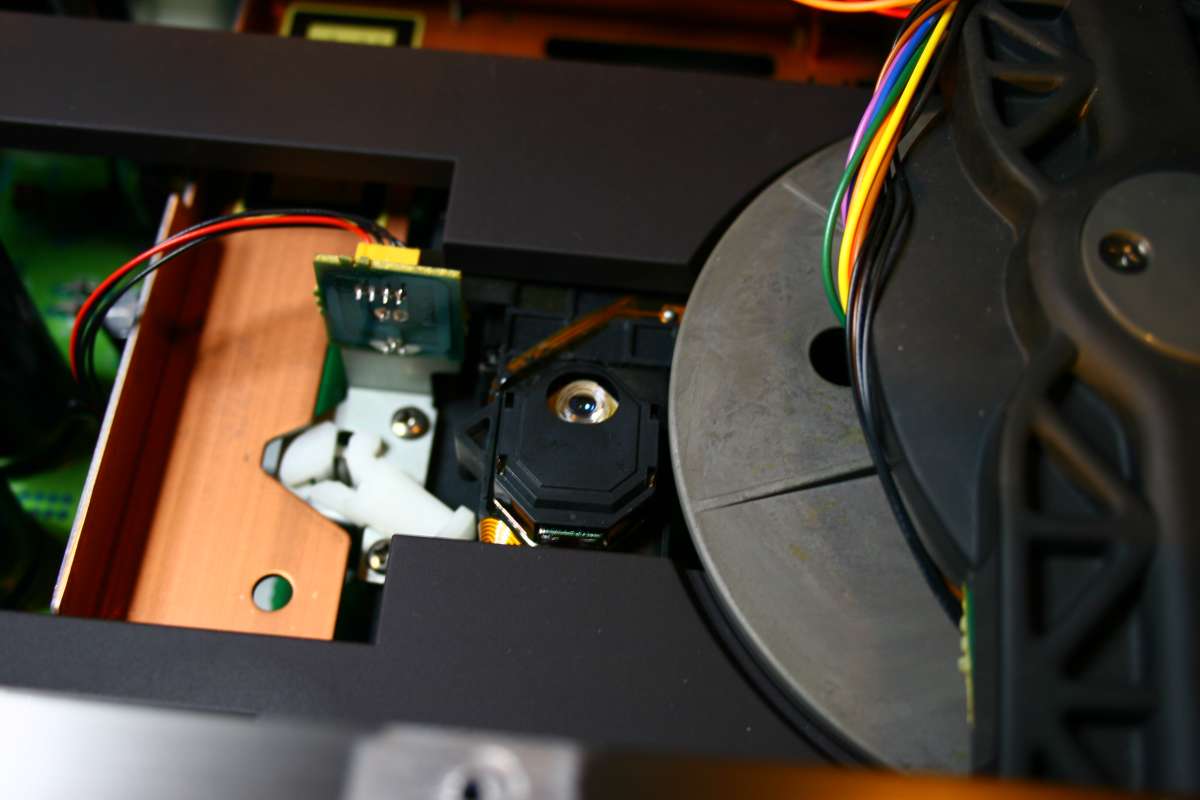
The VRDS level two (middle) with composite bridge and cast alloy clamp
flywheel. Much much better than the ugly cheap level 1 CMK4 mechanism
from TEAC T1 (CD7)
Laser assembly and pickup is Sony KSS151A on magnetic rails - again -
very decent laser.
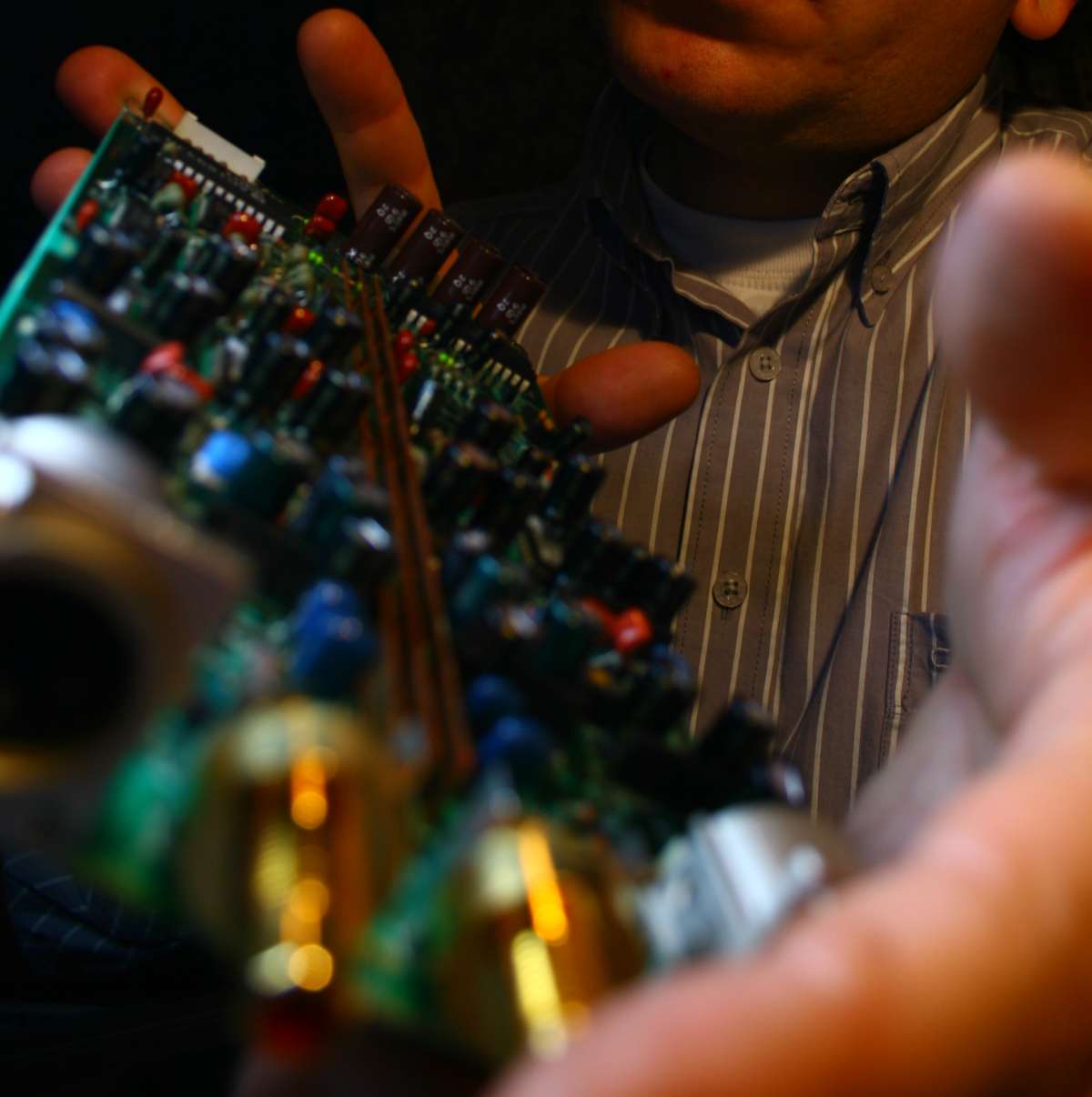
I simply love that PCB
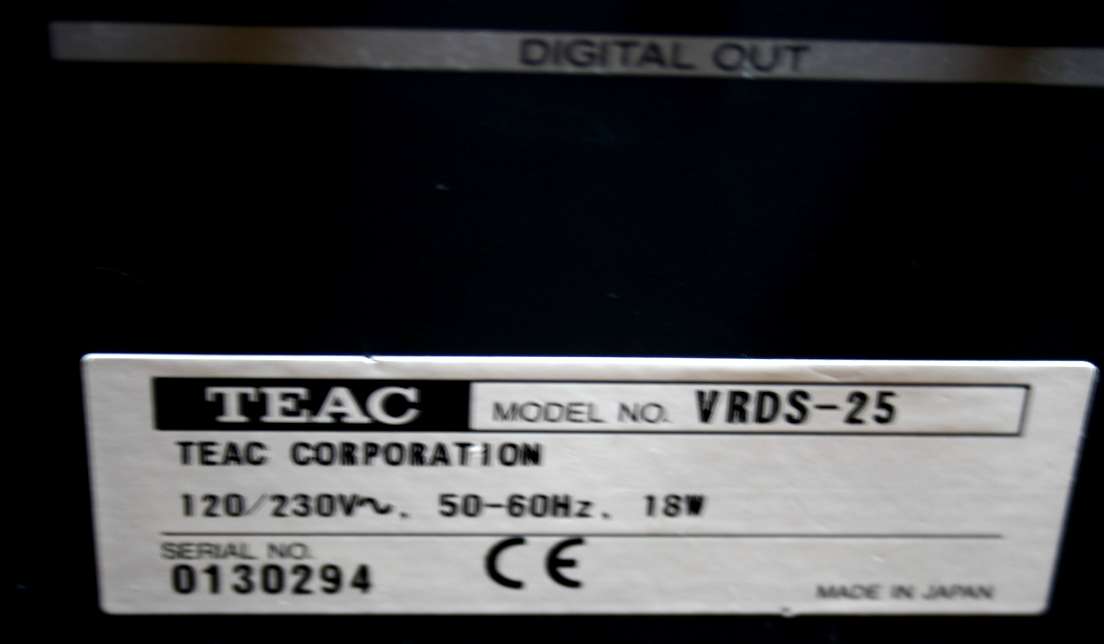
As you see - this player has a transformer with dual primaries - 230
and 120 VAC. Good for all continents.

The XLRs and RCAs are so good quality that they do not need to be
replaced. They can stay.

The power supply section houses a nice, big, potted and encapsulated
transformer. Very nice. There is provision for 230/120 selection. The
raw supplies and rectifiers are heavy duty, oversized, and (whatever
that means) - FOR AUDIO. In my opinion that is BS because a cap can be
either good or bad, but FOR AUDIO means nothing. Just marketing
buzzword.

You see the AUDIO caps and my new bolt for holding the transformer of
lampizator.

This is empty space under the main PCB where all my new power supplies
and filters will be located.
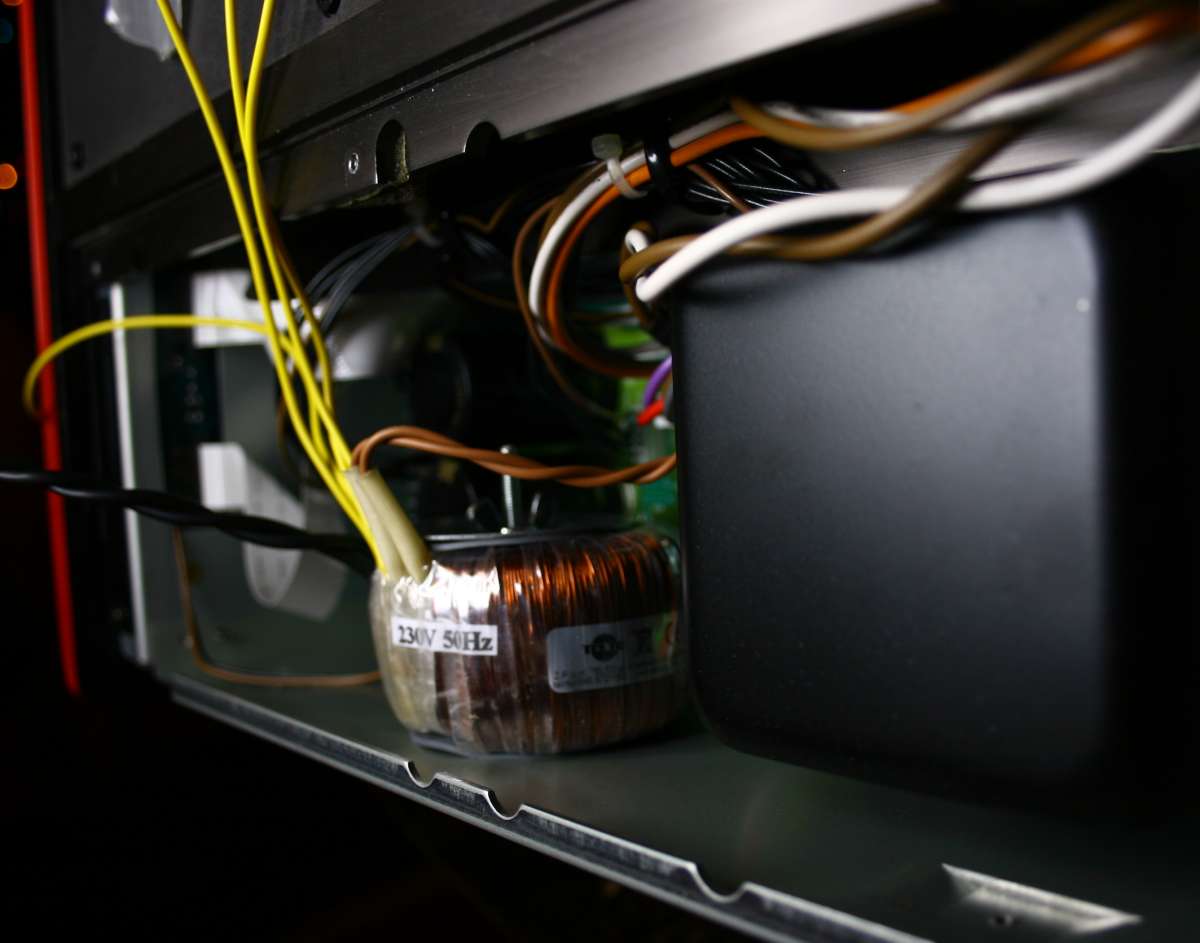
New transformer installed. I had two secondaries of 110 VAC so I used
them in dual mono config.
A tube (two triodes) in balanced mode is ideally supplied from ons
ingle source. If positive signal causes one tube to draw current MORE,
the negative impulse causes the other half to draw EQUALLY LESS.
Summary current demand is CONSTANT and this is very good.

This is main AC cable of TEAC with added parasitic Lampizator brown
twisted pair that is transformer primary.
This way the Lampizator is connected AFTER the switch, after filter of
AC noise and after fuses as well.

In the central section of the player where the mechanism is located -
there is additional large power supply section with 4 gigantic caps and
some other stuff. So the main PCB gets very good power.
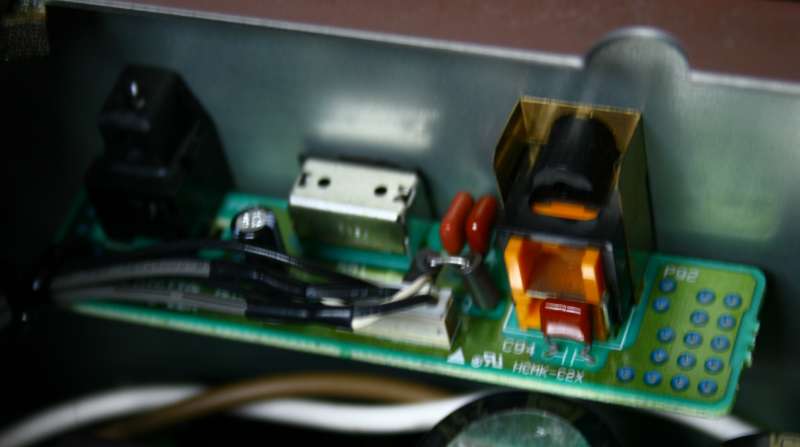
Above you see the SPDIF digitall output section. There is no
transformer for signal (good) and there is TOSLINK as well to the left.
It makes overall a nice transport, should you EVER want a DAC better
than internal AD1862.

The Lampizator power supplies are getting glued and wired together. On
the right - 12 V DC, on the left hand side - two high voltage anode
supplies (CRC filters and integrated bridges.

This is the resistor kit that goes on the socket. Two Cathode resistors
of 200 Ohms and two grid resistors of 240K. The twisted end becomes
system ground.
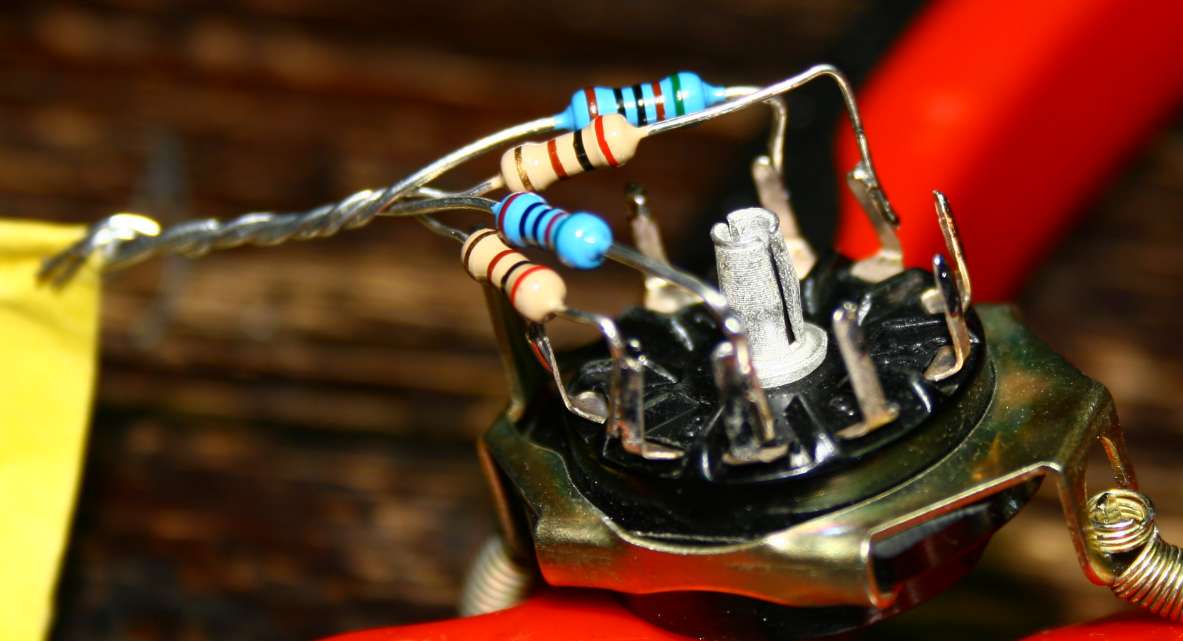
Lampizator circuit ready to go. Anode resistors are mounted away on
anode supply caps output. This makes the triode socket less congested.
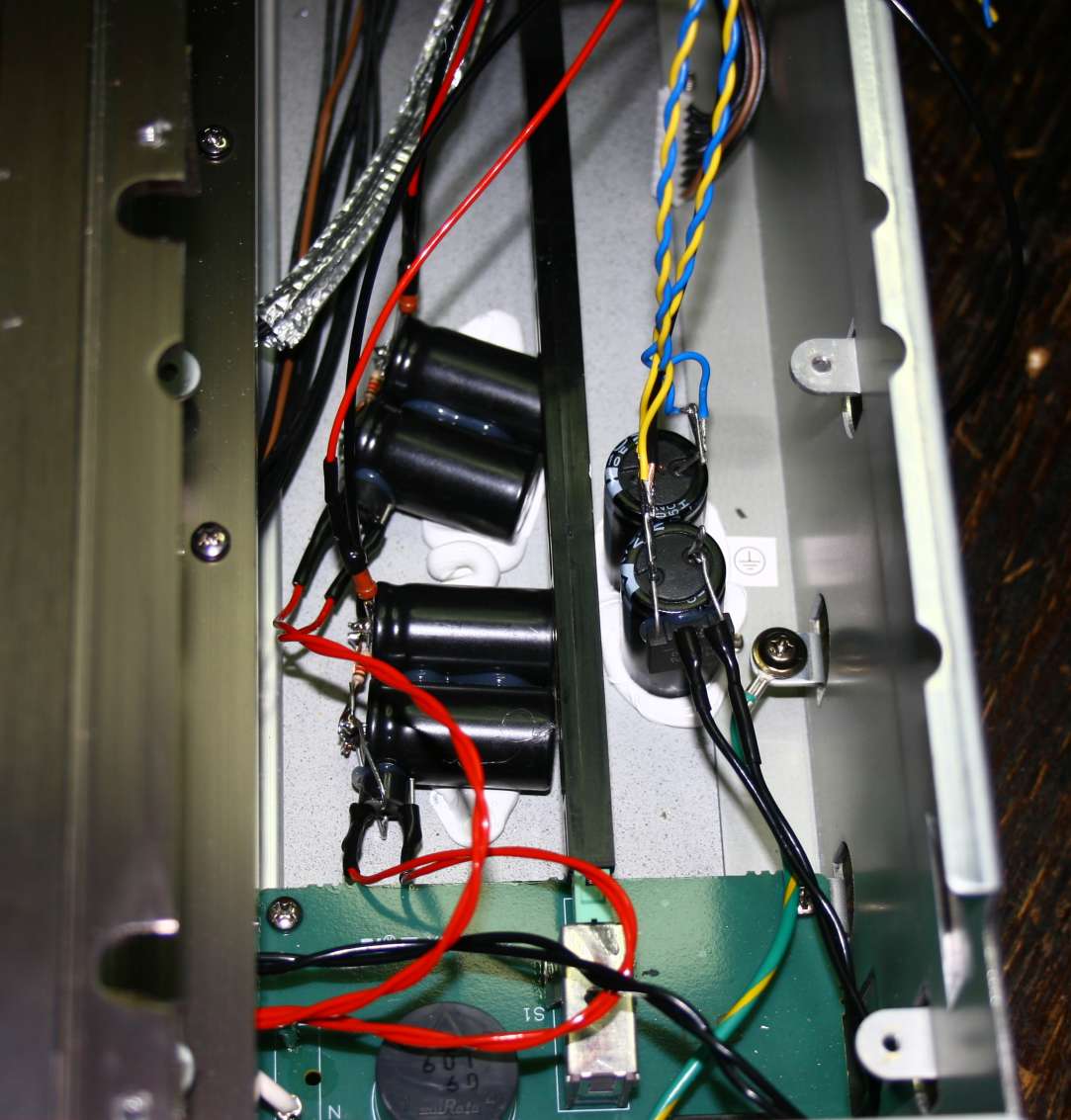
Above: all power supplies are glued to the floor under the main PCB.
the long black thing is the power switch extension rod.
Dark red resistors connected to red wires are anode resistors in anode
follower setup.
The tubes were mounted above main PCB after I removed the analog output
stage - 8 op-amps and their capacitors. There was enough space for 2
tubes.
Red wires go to anodes of triodes. All grounds are connected together
in star fashion: both tube grounds, RCA's, XLRs, anode supply ground,
heater ground and main PCB ground.
XLR and RCA inputs were floated from the PCB and freed.
Clock was powered from now un-used OPAMP supply of plus 12V DC (on the
copper rail.)
SOUND of TEAC VRDS-25
The sound is
right there with the top players. League zero - which stands for no
compromise, best CD playback under the sun. It is not a winner, but
definitely in the same league as the best ones I tried.
The sound is overall the safest all rounder. Not as goose bump magical
midrange timbre as the TDA1541 players, not as thunderous superbass as
Wolfson, not as crystal clear trebles as Lampucera DAC CS4397, and not
as deep deep hallucination as from BB-1794 of the Shanling CD300. But
it has no flaws or
faults. Very highly recommended.
The tube: Russian 6H2P (6N2P) with SRPP and 200 Ohms in both cathodes.
ECC88 and E88CC works great as well.
2 days later: a very enlightening listening session with a comparison
between Audionote DAC 2 signature (2 x PCM63) driven by TEAC as a
transport versus
TEAC lampized. As good as the Audio-Note DAC2 is, the Teac
VRDS-25 walks over it. The
amount of hidden information that TEAC pulls from very familiar
recordings is just unbelievable. At the same time it is more powerful,
more spacious, and with stronger bass, which is is controlled and
powerful. My admiration for the application of the AD-1862 grows. I
like equally well the DENON DCD2560
The Teac is better built, but DENON may actually sound a little bit
better.
I wish I knew how to make it a NOS, forget the Audiotuning of filter
chips.





















